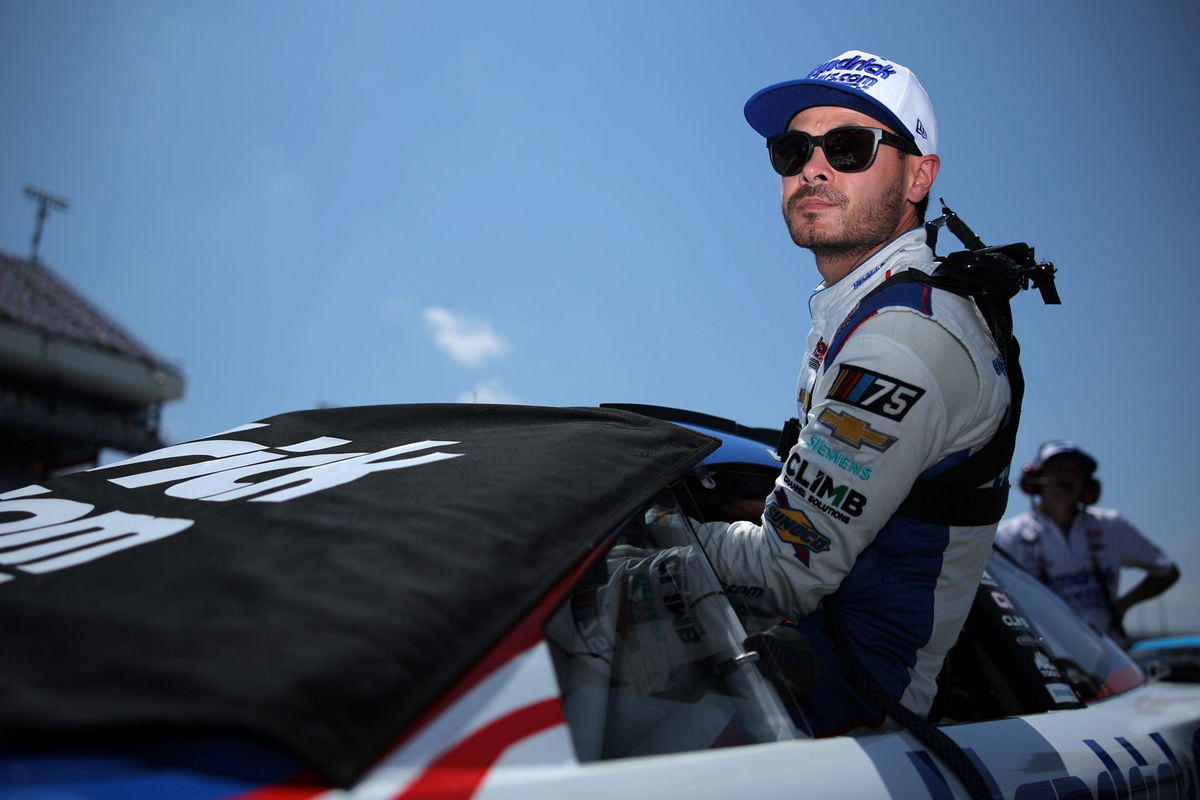
Getty
RICHMOND, VIRGINIA – JULY 29: Kyle Larson, driver of the #5 HendrickCars.com Chevrolet, enters his car during qualifying for the NASCAR Cup Series Cook Out 400 at Richmond Raceway on July 29, 2023 in Richmond, Virginia. (Photo by Jonathan Bachman/Getty Images)

Getty
RICHMOND, VIRGINIA – JULY 29: Kyle Larson, driver of the #5 HendrickCars.com Chevrolet, enters his car during qualifying for the NASCAR Cup Series Cook Out 400 at Richmond Raceway on July 29, 2023 in Richmond, Virginia. (Photo by Jonathan Bachman/Getty Images)
The Memorial Day Double is the kind of motorsport madness that promises fans two delectable races, on the same day!. It’s not just a race—it’s a 1,100-mile odyssey that dares one driver to conquer two of America’s biggest events, the Indy 500 and the Coca-Cola 600, in a single, grueling day. Kyle Larson, the 2021 NASCAR Cup Series champion with a knack for stealing the show, stepped up to this Herculean challenge on May 25, for the second time, backed by Hendrick Motorsports and Arrow McLaren.
Watch What’s Trending Now!
Picture this: Larson, strapped into the No. 17 Chevrolet, tearing around Indianapolis Motor Speedway’s hallowed bricks, chasing a dream only a handful of drivers have dared to pursue. But the racing gods had other plans. A Lap 92 spin sent him crashing into the wall, snuffing out his Indy hopes in a heartbeat. Undaunted, he hopped a helicopter, jetted to Charlotte Motor Speedway, and led the Coca-Cola 600’s opening lap like a man possessed—only to get caught in a Lap 245 pileup with Ryan Blaney and Daniel Suarez, limping home 37th.
It was a day of high hopes and hard crashes. Kyle Larson may have walked out trophyless, but he did not walk out penniless. So, how much did this rollercoaster of a day net him?
ADVERTISEMENT
Larson’s Indy 500 payday
When Kyle Larson’s No. 17 Arrow McLaren Chevrolet slammed into the wall on Lap 92, it wasn’t just his Indy 500 dreams that took a hit—it was a costly crash for his team. The 2025 Indy 500 dished out a record-breaking purse of $20,283,000, the largest in its 109-year history, with winner Alex Palou pocketing $3.8 million, the biggest chunk from the purse.
Larson, finishing 27th after his crash, earned $102,000. That’s a step down from his 2024 Indy debut, where he banked $178,000, boosted by a $50,000 Rookie of the Year award for finishing 18th. For a driver of Larson’s caliber, $102,000 might seem modest, but for 230 miles of open-wheel chaos at 230 mph, it’s a solid paycheck—if you ignore the sting of defeat.
ADVERTISEMENT
The other side of the coin? Getting Larson on the Indy grid was a financial beast. Fielding a single Indy 500 car costs between $1 million and $2 million, covering the chassis, crew, testing, and logistics. Larson’s prep was no walk in the park: two crashes during April and May practice sessions, a driver evaluation test at Phoenix Raceway, and a dedicated Hendrick crew led by Brian Campe embedded with Arrow McLaren.

Imago
Syndication: The Indianapolis Star Jeff Gordon and Kyle Larson sit in the Arrow McLaren pit box Thursday, May 18, 2023, during the third day of practice for the 107th running of the Indianapolis 500 at Indianapolis Motor Speedway. , EDITORIAL USE ONLY PUBLICATIONxINxGERxSUIxAUTxONLY Copyright: xKristinxEnzor/ForxIndyStarx 20692938
The Double’s logistics piled on more costs—$50,000 for private plane and helicopter transfers between Indianapolis and Charlotte, including a 70-minute chopper ride with an IV nurse to keep Larson hydrated. Add in expenses for extra crew, travel, and a Prime Video documentary crew capturing the #Hendrick1100 project, and the total bill likely soared past $2 million. With sponsors like NAPA and Arrow Electronics banking on the exposure, the investment aimed for glory beyond the paycheck, but Larson’s early exit made it a tough pill to swallow.
ADVERTISEMENT
Top Stories
Richard Childress & Johnny Morris Make Patriotic Power Moves Days After Causing NASCAR’s Collapse in Courtroom
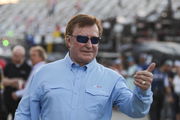
What Is NASCAR’s 5-Strike Rule That Could Change Its Future? Check All Details Here
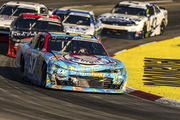
Teresa Earnhardt Triggers Fans as Dale Earnhardt’s Unearthed DEI Relics Go Public
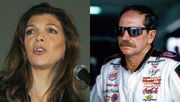
Rick Hendrick Strikes Fear in NASCAR Fans With Chevy’s New “Illegal” Car
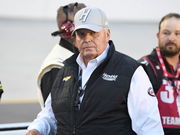
New Charter Deal Triggers ‘Financial Frenzy’ as NASCAR Teams Set for Massive Payday
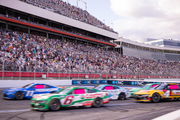
Indy 500 vs. Coca-Cola 600 price purse comparison
The Indy 500 and Coca-Cola 600 are the crown jewels of American motorsport, each with a purse that screams prestige but plays by its own rules. The 2025 Indy 500’s $20,283,000 purse was a colossus, outshining most racing events worldwide. Every driver in the 33-car field took home at least $145,300, with bonuses like the $10,000 Fastest Rookie Qualifier award (which Larson didn’t claim) padding some wallets. The structure rewards participation: even a crash-out like Larson’s nets six figures, while top finishers like Palou rake in millions. It reflects Indy’s status as “The Greatest Spectacle in Racing,” where just showing up pays dividends.
ADVERTISEMENT
Coca-Cola 600, by contrast, offered a $13,651,450 purse in 2025, up from $9.8 million in 2024, but it’s a different game. NASCAR keeps exact driver payouts under wraps, but estimates suggest winner Ross Chastain pocketed 8-10% of the purse, roughly $1.1 million to $1.4 million. The rest splits among the 40-car field, with top-10 finishers earning the big bucks while backmarkers get slim pickings. Larson’s 37th-place finish, thanks to that Lap 245 wreck, likely netted him under $150,000, based on NASCAR’s tiered system. Had he won both races, he could’ve banked around $6 million—a dream derailed by those crashes.
The Indy 500’s purse, spread across fewer drivers, ensures a hefty baseline payout, with 33 cars splitting $20.2 million. NASCAR’s 40-car field divides a smaller pie, rewarding winners and punishing stragglers. Larson’s total take—$145,300 from Indy and under $150,000 from Charlotte—came to less than $300,000, a fraction of the $2 million-plus Arrow McLaren and Hendrick invested.
Larson himself hinted at the toll, telling reporters, “It’s a large investment, and to have it go not good two years in a row, I just don’t think it’s really worth it.” The numbers back him up: Indy’s deep purse guarantees a check, but NASCAR’s structure demands a strong finish, a tough break for Larson’s wreck-filled day. Yet, the #Hendrick1100 project’s exposure, with a documentary in the works, keeps the Double’s allure alive, even if the financials fell short.
ADVERTISEMENT
ADVERTISEMENT
ADVERTISEMENT
ADVERTISEMENT

